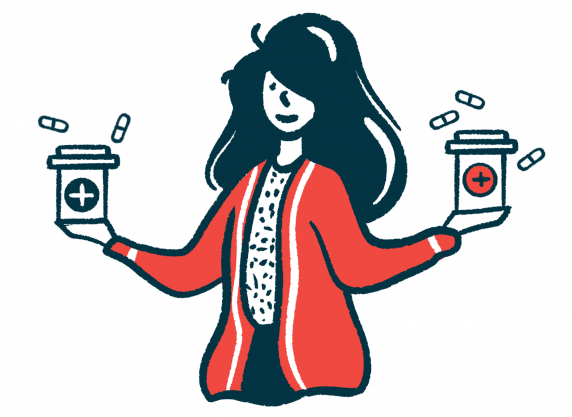AI model identifies existing drugs to repurpose for rare diseases
Harvard model outperforms others by almost 50%
Written by |

An artificial intelligence (AI) model could identify possible therapies for thousands of diseases from existing treatments, according to Harvard Medical School researchers. These diseases include rare disorders such as aromatic I-amino acid decarboxylase (AADC) deficiency, for which there is currently no treatment.
The model, called TxGNN, closely resembles the reasoning doctors use in the clinic by identifying possible drug candidates, both experimental and approved; reporting on side effects; and explaining the rationale for decisions.
In a study, the model outperformed the current leading AI models by an average of almost 50% in identifying potential drug candidates.
“This is precisely where we see the promise of AI in reducing the global disease burden, in finding new uses for existing drugs, which is also a faster and more cost-effective way to develop therapies than designing new drugs from scratch,” Marinka Zitnik, PhD, lead researcher and assistant professor of biomedical informatics at Harvard, said in a university news story.
The study, “A foundation model for clinician-centered drug repurposing,” was published in Nature Medicine.
Luck vs. strategy
The researchers made the model available for free to clinicians who want to explore new treatment options for patients with rare diseases.
It is common for many medicines to be repurposed for treating diseases beyond those for which they were initially approved. Nearly 30% of all FDA-approved drugs acquire at least one additional indication for treatment following initial approval.
Repurposing drugs is promising because it relies on medicines that are well studied, have known safety profiles, and have already gone through the regulatory approval process.
However, repurposing drugs relies on patient reports of unexpected beneficial side effects or on physicians’ willingness to prescribe medicines for off-label use, a clinical practice in which drugs are prescribed for conditions for which they were not initially intended.
“We’ve tended to rely on luck and serendipity rather than on strategy, which limits drug discovery to diseases for which drugs already exist,” Zitnik said.
Drug repurposing can also accelerate the development of treatments for rare diseases. With 5%-7% of more than 7,000 rare diseases having U.S. Food and Drug Administration (FDA)-approved treatments, according to Harvard, this strategy could alleviate the global disease burden.
Reaching across disease data
Researchers believe that what sets TxGNN apart from current AI drug repurposing models is that it identifies shared features across multiple diseases to extrapolate from a well-understood disease with known treatments to a related rarer disease that is less well-understood or has few treatments.
While most current AI models are trained on a single condition or a few diseases, TxGNN was trained on diverse, multi-disease data, including DNA information, cell signaling, levels of gene activity, and clinical notes.
The model also has an explainer feature that provides a rationale behind each decision, which allows for more transparency and can increase physicians’ confidence.
In the study, TxGNN identified potential drug candidates from a pool of almost 8,000 medications, both FDA-approved drugs and therapies undergoing clinical trials, for 17,080 diseases, including those with no available treatments.
Among these diseases were three rare conditions, including one neurodevelopmental disorder known as Kleefstra’s syndrome. Although it is caused by a different genetic mutation, Kleefstra’s syndrome often leads to developmental delays and reduced muscle tone, symptoms also observed with AADC.
TxGNN recommended the drug zolpidem (sold under the brand name Ambien, among others) for the treatment of Kleefstra’s syndrome, reasoning that it could potentially stimulate underactive neurons in the brain and consequently reduce cognitive issues in patients. This was aligned with anecdotal evidence and some clinical studies that have shown that zolpidem can enhance speech, motor skills, and alertness in individuals with neurodevelopmental disorders.
Thus, the prediction and explanatory rationale aligned with medical evidence despite these clinical cases not being included in the data used to train the model.
The tool similarly recommended therapies that aligned with medical knowledge for possible treatments for Ehlers-Danlos syndrome, a rare connective tissue disorder, and nephrogenic syndrome of inappropriate antidiuresis (NSIAD), a rare condition that causes water imbalances.
Beyond identifying medicines for conditions with no treatments, the model could identify alternative drugs for patient populations that cannot tolerate side effects from existing therapies or for whom existing therapies are ineffective. The model was also 35% more accurate in its detection of contraindications, or preexisting medical conditions or symptoms that would make certain treatments harmful to a patient.
The researchers cautioned that TxGNN would need additional screening to establish safety and efficacy and to determine other practical considerations, such as dose and frequency of treatments.
The team has begun collaborating with several rare disease foundations in hopes of identifying new, effective treatments.
“With this tool we aim to identify new therapies across the disease spectrum but when it comes to rare, ultrarare, and neglected conditions, we foresee this model could help close, or at least narrow, a gap that creates serious health disparities,” Zitnik said.







